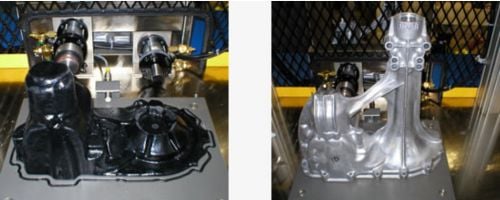What is the significance of volume in leak testing?
The volume in leak testing refers to the size or magnitude of a three-dimensional space enclosed within an object. Why are we so concerned with volume?
Volume is one of the key factors in leak testing. When reviewing a leak test application with a customer or colleague, the first three questions are:
- What is your test pressure?
- What is the leak rate you want to detect?
- What is the internal volume of the test part?
The answers to those three questions help us to:
- Determine if the application is feasible.
- Estimate the test cycle time.
If we don’t know the volume, we can’t answer the questions on feasibility, cycle time or even provide are commendation for the right leak tester. The Uson instrument valve sizing is typically done with reference to the test volume. One quick way to calculate test volume is to use our free Leak Calculator App.
Volume plays a key role in the physics behind the leak tests we perform.
Sometimes we must add volume to the test circuit to prevent the pressure from dropping too rapidly. Extra volume is needed when the test part is small, and the reject leak rate is sizable.
A rule of thumb for pressure decay or gage decay testing is for every 1 cubic inch of volume you need to add 1 second of measure step time for detecting 1 scc/minute leak when using a 30 psig sensor. So, if you can remove 2 cubic inches of volume from the test circuit, you could save 2 seconds minimum per test cycle and you have increased your production volumes. That could be a 20% increase in production if your cycle time started at 12 seconds. You could improve from 300 parts per hour to 360 parts per hour. For certain applications, we also recommend a volume plug or infill be designed into the sealing fixture to minimize the test volume. This can be a cycle time saver or even allow the test parameters to be feasible. The images below show a volume plug built onto the part nest and in the second image, a part loaded onto the nest/volume plug.

Test volume directly impacts cycle time.
So, in summary, the test volume has as much to do with determining the cycle time for the leak tests as do the reject leak rate and test pressure. You should always be concerned about your test volume. This allows you and us to properly determine the best solution for the application.